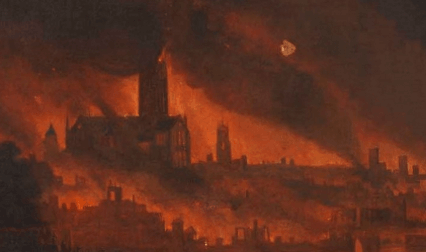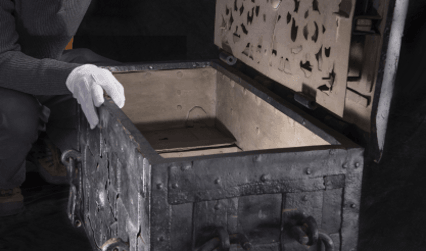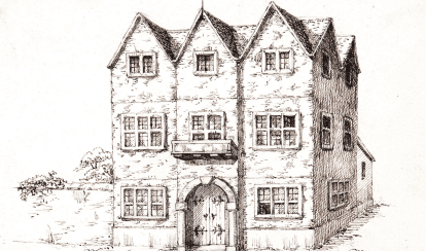In September 1666 the Great Fire of London destroyed 373 acres of the city in 4 days. 80,000 people lost their homes, as did many institutions including the Royal College of Physicians. The RCP was one of many organisations around the city that commemorated the 350th anniversary of the tragedy.

The fire came at the end of a devastating decade for the city and its physicians. The 1660s had started with high hopes, after King Charles II’s triumphant return from exile signalled the end of the bloody Civil War. But England was still embroiled in another expensive conflict – not with itself but with the Dutch, over colonies and trade routes.
In addition to this, in 1665 the city suffered from the last great epidemic of the bubonic plague. A bacterial infection of the lymphatic system, caused by a bite from an infected rat flea, the plague caused boils filled with dried blood to form in the armpits, neck and groin – and there was no cure. In 1665 alone the plague killed at least 68,000 people – over one in five Londoners died.

During the plague some physicians stayed to help the sick, but many fled, following their wealthy clients to the countryside. Before their departure, the physicians secreted their treasure in an iron ‘Nuremberg’ chest. Constructed from painted sheet iron and reinforced with iron bands and fittings, this sturdy money chest has several elaborate security devices, including concealed keyholes, padlocks and two hasp-and-staple type locks.
Unfortunately, these locks did not prevent thieves breaking into the chest in 1665. They stole £1,000 in cash and silver plate, donated the previous year by new honorary fellows. The theft of the silver and cash almost bankrupted the College.
The flight of the physicians during the plague badly damaged their public reputation. Additionally, the College was fighting a long, drawn-out war of antagonism with their old rivals, the Society of Apothecaries. It was largely the apothecaries who treated victims of the plague – they remained in the city to look after their shops, and prescribed over-the-counter remedies to ease symptoms.

When the Great Fire of London struck, the Royal College of Physicians was in bad shape. The physicians had little public regard, they were bankrupt, and on Tuesday 4 September they lost their home at Amen Corner, along with most of their collections and library. This final tragedy threatened the continued authority and existence of the College. How on earth did they survive for a further 350 years?
Sarah Backhouse, exhibitions officer
The RCP exhibition ‘To fetch out the fire’: reviving London, 1666, ran from 1 September to 16 December 2016.
